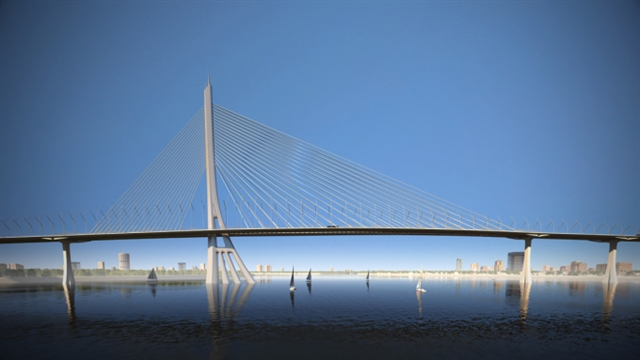
Three new bridges in HCM City are expected to make travel more convenient, improve regional connectivity and reduce traffic jams.
 |
Three new bridges in HCM City are expected to make travel more convenient, improve regional connectivity and reduce traffic jams.
To cost an estimated VND10 trillion (US$433 million), Can Gio Bridge over the Soai Rap River will link Nha Be and Can Gio districts.
In 2018, the Department of Planning and Architecture organized a contest to select a design for it, and it chose a cable-stayed structure with four lanes running a total length of 3.4km.
Construction is scheduled to be completed not later than 2031, and the bridge will replace the ferry, improving connectivity with Can Gio district helping develop its coastal tourist site.
The 2,870ha Can Gio Tourism Urban Area is expected to create a breakthrough in socio-economic development for the coastal district.
For many years people have been demanding a bridge since the Cat Lai Ferry is badly overloaded.
The ferry is a key link between HCM City and Dong Nai and Ba Ria- Vung Tau provinces.
The next bridge, to cost VND7.2 trillion ($312 million), will be over the Dong Nai River between HCM City’s Thu Duc city and Dong Nai province’s Nhon Trach district.
Dong Nai will be responsible for building the bridge while HCM City will build the approach road on its side.
Construction is slated to start at the end of 2023.
The Thu Thiem 4 Bridge over the Sai Gon River will be between the intersection of Tan Thuan 2 Bridge and Nguyen Van Linh Boulevard in District 7 and the R4 Route in Thu Duc.
It will be designed like a bamboo tree, a familiar sight in the country.
The 2.16km bridge will have six lanes and cost nearly VND5.3 trillion ($229 million).
It is expected to ease traffic flows between the districts of Binh Thanh, Thu Duc, Binh Chanh, Nha Be, 7, and 8, and reduce accidents around ports in districts 4 and 7.
Construction is expected to start before 2028.
(Source: VNS)



